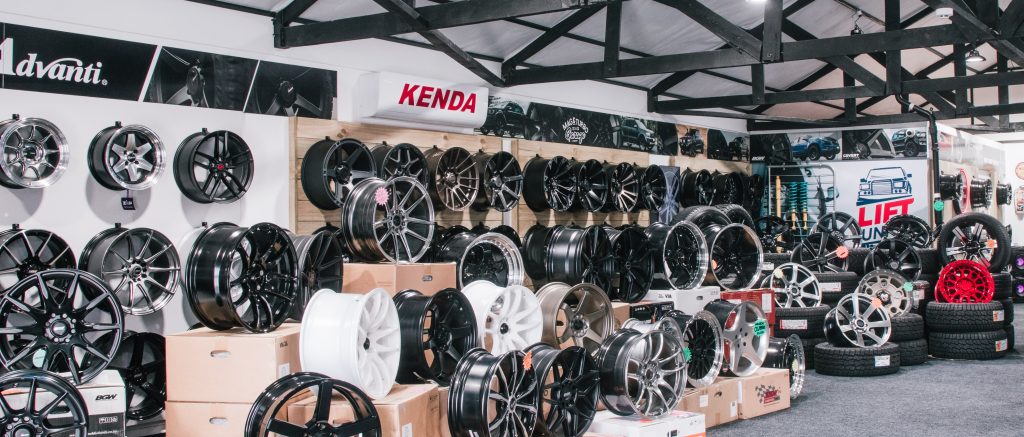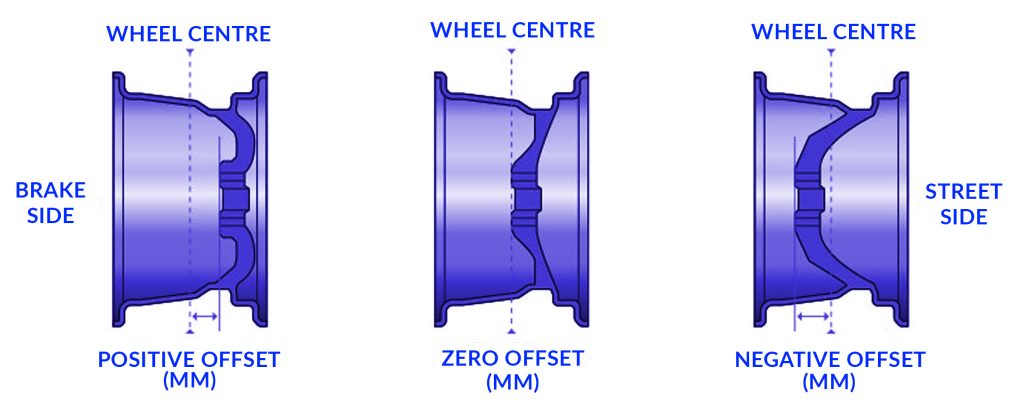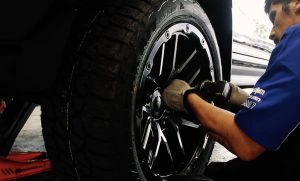- Home
- ›
- Blog Posts
- ›
- Choosing The Right Mag Wheels For Your Ride
Choosing The Right Mag Wheels For Your Ride

New Zealanders have always had a love affair with the motor vehicle and personalising them with a new set of aftermarket wheels is often the first modification done!
Here at Mag & Turbo Tyre and Service Centre we have been helping New Zealanders change the wheels on their vehicles for over 30 years. So why do people do this? Is it function or form? From what we have learnt over the years most people personalize and modify their vehicle as an expression of their own style. When people make an aesthetic change they feel that it is now their vehicle with a touch of their input.
Occasionally we work with customers that require wheel and tyre upgrades to perform a certain function like carrying greater loads or become more capable on different terrains. In both cases, our 30 years of experience and knowledge of, makes us the best choice to getting the you wheeled up right! Below is some detailed information that can help you better understand how to choose wheels for your ride!
4 Key Factors To Consider When Choosing Mag Wheels
Before you even start browsing for mags, having a grasp of the technical aspects is a good idea as it will narrow down your choices a bit and help figure out which wheels are going to be compatible with your car.

1. Diameter And Width
Let’s get straight into the basics and start with the diameter and width of your wheels.
- Diameter: Measured in inches, the diameter of your new mag wheels needs to match the recommended size for your vehicle. Consult your owner’s manual or a trusted tyre and wheel specialist to determine the correct diameter range for your car.
- Width: The width of the wheel, also measured in inches, determines the width of the tyre it can safely accommodate. A wider wheel can often accommodate a wider tyre, potentially improving grip and cornering performance, however, going too wide can lead to problems, so checking manufacturer recommendations is always advised.
Insider Tip: Consider your typical daily driving. Do you frequently encounter gravel roads, are you mostly driving around town or out on the highway? Sometimes tyres with a bit more sidewall might be preferable, or there may be other factors that influence your wheel diameter choice.
2. Bolt Pattern Or PCD
What is the bolt pattern? Also known as Pitch Circle Diameter (PCD), the bolt pattern refers to the number of wheel studs or bolts on your vehicle’s hub and the diameter of the circle they form. The bolt pattern is expressed with two numbers, for example, 5×114.3. The first number indicates the number of bolts (in this case, 5), and the second number represents the diameter of the circle (in millimetres) that passes through the centre of each bolt hole.
Your new mag wheels must have the exact same bolt pattern as your vehicle’s hubs. An incorrect bolt pattern will mean the wheels simply won’t fit, no matter how good they look. You can usually find your vehicle’s bolt pattern in your owner’s manual or by searching online (stay specific to your car make and model).
Insider Tip: Reputable wheel suppliers, like Mag & Turbo, will also have this information readily available. Never attempt to force wheels with an incorrect bolt pattern onto your vehicle. This is extremely dangerous and can lead to wheel failure and serious accidents.

3. Offset
The offset refers to the distance between the wheel’s mounting surface (the part that sits flush against the brake rotor or drum) and its centre line. It’s measured in millimetres and can be positive, negative, or zero.
- Positive Offset: Where the mounting surface is closer to the outside of the wheel. This generally pulls the wheel inwards, towards the centre of the vehicle. Most factory wheels have a positive offset.
- Negative Offset: Where the mounting surface is closer to the inside (towards the brake components) of the wheel. This pushes the wheel outwards, giving the vehicle a wider stance.
- Zero Offset: Where the mounting surface is exactly in line with the wheel’s centre line.
Insider Tip: Offset plays a significant role in your car’s handling, steering feel, and overall appearance. Changing the offset too drastically can affect wheel bearing load, and suspension geometry. However, a slight change in offset can improve the vehicle’s stance, giving it a more aggressive look (popular among Kiwi car enthusiasts), but staying within the recommended limits is necessary, which is why it is modifying the offset is an area where expert advice is strongly recommended.

4. Centre Bore
The centre bore is simply the hole in the centre of the wheel that centres it precisely on the vehicle’s hub. The wheel’s centre bore should match the diameter of your vehicle’s hub, this is called hub-centric wheels, and they have a centre bore that matches the hub exactly, providing a precise and secure fit. This is the preferred type as it ensures the weight of the vehicle is supported by the hub, reducing stress on the wheel studs or bolts.
Lug-centric wheels are also available however, these rely solely on the wheel studs or bolts to centre the wheel, which is not as reliable. It is possible to choose wheels with a centre bore larger than your vehicle’s hub, but you will need to use spigot rings (also known as hub-centric rings) to fill the gap and ensure a proper, vibration-free fit.
Insider Tip: Regardless of whether your wheels are perfectly hub-centric or require spigot rings, always use a torque wrench to tighten your lug nuts to the vehicle manufacturer’s specified torque settings. This is non-negotiable for safety and performance.

Mag Wheel Styles In New Zealand
Once you’ve nailed down the technical specs, the fun part begins – choosing the style of your mag wheels! This is where you get to personalise your vehicle and reflect your individual style.
- Spokes. From sleek five-spoke designs to intricate multi-spoke patterns, the number and style of spokes significantly impacts the wheel’s appearance. Straight, concave, twisted, or mesh are common choices.
- Finish. The finish of your mag wheels can dramatically alter their appearance. Popular options include:
- Painted: A wide range of colours and can be matte, gloss, or satin.
- Machined: Features raw metal accents, often on the face of the spokes, creating a contrast with painted areas.
- Polished: Provides a bright, mirror-like shine. Requires more maintenance to keep looking their best.
- Chrome: A highly reflective and durable finish, though it can be prone to pitting over time, particularly in coastal areas.
- Powder-Coated: A durable and long-lasting finish that comes in various colours and textures, ideal for withstanding the rigours of Kiwi roads.
What Are Mag Wheels Made From?
Traditionally “mag wheels” referred to magnesium alloys (now less common due to cost and maintenance), the term is now broadly used for any aftermarket alloy wheels which are typically made from a mix of aluminium and other metals. They are the more popular choice for aftermarket wheels due to their numerous advantages including:
- Lightweight. A significant advantage, lighter wheels reduce unsprung weight, which can lead to improved handling, enhanced acceleration and braking, and potentially better fuel economy.
- Stylish Designs. Alloy wheels offer greater design flexibility due to the manufacturing process. This allows for a wider variety of spoke patterns, finishes, and overall aesthetics, enabling you to truly personalise your vehicle.
- Corrosion Resistance. Modern alloy wheels typically have protective coatings that make them more resistant to rust and corrosion compared to steel wheels.
What About Steel Wheels?
Steel wheels are made from pressed steel and are the standard fitment on many base-model vehicles. Steel wheels are significantly more affordable to purchase than alloy wheels and are known for being more resistant to bending or cracking from impacts like hitting potholes.
They can often withstand more abuse than alloy wheels, making them a practical choice for rougher driving conditions. Steel wheels are a common choice for heavier off-road vehicles, but can have a negative impact on handling and are susceptible to rust. Steel wheels typically have simpler, less aesthetically appealing designs, often requiring hubcaps to improve their appearance.
Are Rims, Mags And Wheels The Same Thing?
Using the words “rims” or “mags” when talking about your car’s wheels is a common thing here in NZ, but technically speaking, they are different things. Let’s break it down:
- Wheels: Are the complete assembly that connects to the vehicle’s axle, including the rim, hub, spokes and other structural components.
- Rims: The rim is actually the outer edge of the wheel, where the tyre is mounted. It’s the part that seals the tyre to the wheel and provides the contact surface for the tyre bead.
- Mags: Originally, “mags” referred to magnesium wheels, known for being lightweight. However, the term is now often used to describe any alloy wheel (aluminium alloy), especially those that are visually appealing and lightweight, even if they are not made of magnesium.
So in essence, while “rims” are a part of the “wheel,” and “mags” are used to refer to a specific material, both terms are sometimes used to describe the entire wheel, especially when talking about aftermarket or custom wheels.
Looking for the perfect mags to transform your vehicle? The team at Mag & Turbo are here to help! Our experienced tyre and wheel technicians can guide you through the process, helping you choose the right mag wheels that are compatible with your vehicle. Contact Mag & Turbo today or visit our stores nationwide.


